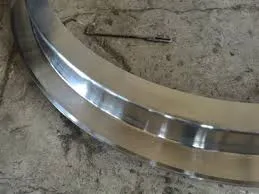- Afrikaans
- Albanian
- Amharic
- Arabic
- Armenian
- Azerbaijani
- Basque
- Belarusian
- Bengali
- Bosnian
- Bulgarian
- Catalan
- Cebuano
- China
- China (Taiwan)
- Corsican
- Croatian
- Czech
- Danish
- Dutch
- English
- Esperanto
- Estonian
- Finnish
- French
- Frisian
- Galician
- Georgian
- German
- Greek
- Gujarati
- Haitian Creole
- hausa
- hawaiian
- Hebrew
- Hindi
- Miao
- Hungarian
- Icelandic
- igbo
- Indonesian
- irish
- Italian
- Japanese
- Javanese
- Kannada
- kazakh
- Khmer
- Rwandese
- Korean
- Kurdish
- Kyrgyz
- Lao
- Latin
- Latvian
- Lithuanian
- Luxembourgish
- Macedonian
- Malgashi
- Malay
- Malayalam
- Maltese
- Maori
- Marathi
- Mongolian
- Myanmar
- Nepali
- Norwegian
- Norwegian
- Occitan
- Pashto
- Persian
- Polish
- Portuguese
- Punjabi
- Romanian
- Russian
- Samoan
- Scottish Gaelic
- Serbian
- Sesotho
- Shona
- Sindhi
- Sinhala
- Slovak
- Slovenian
- Somali
- Spanish
- Sundanese
- Swahili
- Swedish
- Tagalog
- Tajik
- Tamil
- Tatar
- Telugu
- Thai
- Turkish
- Turkmen
- Ukrainian
- Urdu
- Uighur
- Uzbek
- Vietnamese
- Welsh
- Bantu
- Yiddish
- Yoruba
- Zulu
Oct . 11, 2024 01:12 Back to list
investment casting steel alloys
Investment Casting Steel Alloys An Overview
Investment casting, also known as lost-wax casting, is a precision manufacturing process widely utilized in various industries to create complex metal parts with exceptional surface finishes. Among the materials used in investment casting, steel alloys hold a significant position due to their remarkable mechanical properties, versatility, and durability. This article explores the characteristics and applications of investment casting steel alloys, highlighting their importance in modern manufacturing.
Understanding Investment Casting
The investment casting process begins with creating a wax pattern, which is a replica of the desired end product. This pattern is coated with a ceramic shell, and the wax is subsequently melted and drained away, leaving a hollow mold. Molten metal is then poured into the mold to create the final component. This method allows for intricate designs and is ideal for producing components with tight tolerances and excellent surface quality.
Types of Steel Alloys Used in Investment Casting
Investment casting employs various steel alloys, each offering unique properties that cater to specific applications. The most commonly used steel alloys include
1. Carbon Steel Carbon steel alloys are characterized by their strength and hardness. They are primarily used in applications requiring good wear resistance and moderate corrosion resistance.
2. Alloy Steel Alloy steels often contain elements such as chromium, nickel, and molybdenum, which enhance their mechanical properties. These steels are well suited for applications subjected to high-stress conditions and elevated temperatures.
3. Stainless Steel Known for its corrosion resistance, stainless steel is highly favored in industries such as food processing, chemical processing, and medical devices. Investment casting stainless steel allows for complex shapes while maintaining its aesthetic appeal and functional integrity.
4. Tool Steel Tool steel alloys are designed for manufacturing cutting tools and molds. They possess high hardness, wear resistance, and the ability to withstand high temperatures, making them ideal for rigorous applications.
investment casting steel alloys

Advantages of Investment Casting Steel Alloys
The investment casting process in steel alloys presents several advantages
- Precision and Detail Investment casting can produce intricate shapes and details that are often unattainable with other manufacturing methods. This precision reduces the need for extensive machining operations.
- Material Efficiency Minimal waste is generated during the investment casting process, resulting in a more sustainable production method. The ability to cast complex geometries also means that fewer components may be needed for assembly.
- Versatility With a variety of steel alloys available, investment casting can cater to a wide range of industries, including aerospace, automotive, medical, and manufacturing. Each alloy can be tailored to meet specific performance requirements.
- Strength and Durability Steel alloys used in investment casting deliver superior strength and mechanical properties, making them ideal for critical components that must withstand harsh operational environments.
Applications of Investment Casting Steel Alloys
Investment casting steel alloys are prevalent in numerous applications. In the aerospace industry, components such as turbine blades and structural parts benefit from the lightweight yet robust nature of these alloys. In the automotive sector, investment casting is used to manufacture engine parts, transmission housings, and intricate brackets. The medical field uses investment casting to create surgical instruments and implants that require high precision and reliability.
Conclusion
Investment casting steel alloys represent a critical component in advanced manufacturing. With their excellent mechanical properties, versatility, and efficiency, these materials continue to play a vital role in producing high-quality components across various industries. As technology advances, the potential for further innovations in investment casting processes and materials will likely expand, enabling even more complex and resilient designs in the future.
-
Premium Casting Parts Supplier - Custom Grey Iron, Stainless Steel & Brass
NewsMay.07,2025
-
FRC Concrete Pipe Mold/Mould Bottom Ring Durable Precision Design
NewsMay.07,2025
-
Original Chinese Factory Supplier for Durable Concrete Pipe Mold Bottom Rings
NewsMay.07,2025
-
High-Strength Sodium Slicate Sand Casting Custom & ODM Services
NewsMay.07,2025
-
Custom Low-NOx Gas Boilers for Commercial Heating Efficient Solutions
NewsMay.07,2025
-
Low Nitrogen Condensing Gas Boilers - Efficient & Custom Solutions ODM Available
NewsMay.07,2025


